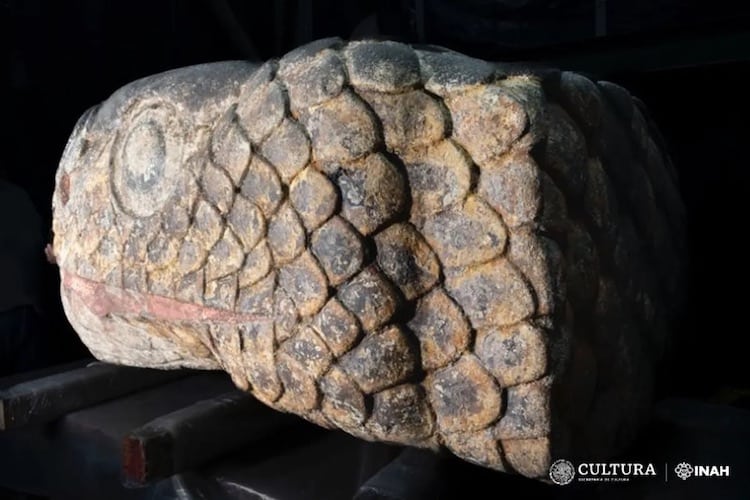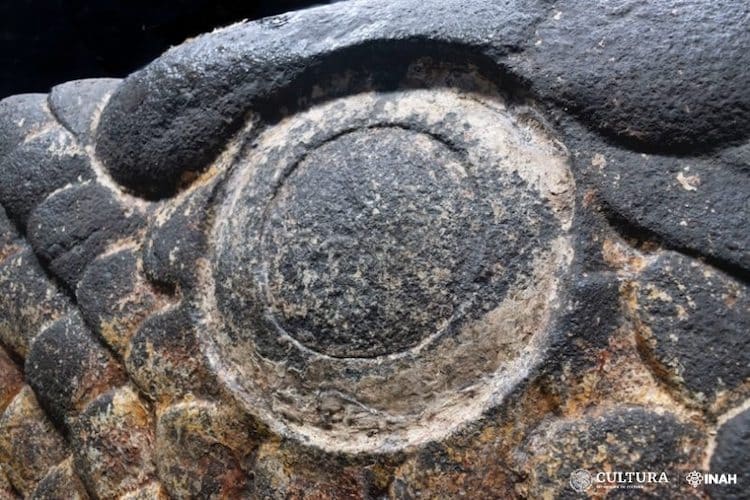
Photo: LANCIC/UNAM/INAH
On September 19, 2022, a 7.7 magnitude earthquake rocked Mexico City, damaging multiple buildings and uncovering a lost artwork in the process. A large 500-year-old sculpture was discovered in the shifted ground near the historic center of the metropolis. It turns out that this discovery has a direct connection to the Aztec Empire.
The National Institute of Anthropology and History (INAH) sent a team to the site and recovered the massive artefact. Measuring 5.9 feet long, 3.2 feet tall, and 2.7 feet wide, it depicts a giant snake head. The surface of the 1.2-ton stone was meticulously carved, featuring a pair of large eyes, semi-open mouth, and numerous scales. Amazingly, the sculpture was found in great condition, and about 80% of the surface still features ochre, red, blue, black, and white pigments from hundreds of years ago.
“These pigments, which represent a famous example of the color palette that the Mexica used to decorate their cult images and their temples, are extremely fragile due to the mineral and plant materials from which they were obtained,” Barajas Rocha, from the INAH, said. As such, the snake head sculpture was moved to a secure air-tight humidity chamber, where the team can monitor it. Hopefully, they are able to slowly remove some of the moisture from the rock without damaging the color or stone.
The significance of the snake head is still being determined. Snakes play a large role in Aztec mythology, representing fertility and rebirth. It is also possible that this sculpture is associated with the god Quetzalcoatl, who was often depicted as a feathered serpent.
The sculpture measures 5.9 feet long, 3.2 feet tall, and 2.7 feet wide, and weighs 1.2 tons.

Photo: LANCIC/UNAM/INAH

Photo: LANCIC/UNAM/INAH
h/t: [IFL Science]
All images via LANCIC/UNAM/INAH.
Related Articles:
New Dinosaur Fossil Has Shockingly Long Legs That Connect it to Ancient Bird Ancestors
Origami: How the Ancient Art of Paper Folding Evolved Over Time and Continues to Inspire
The Brooklyn Museum Returns 1,300+ Ancient Artifacts to Costa Rica
